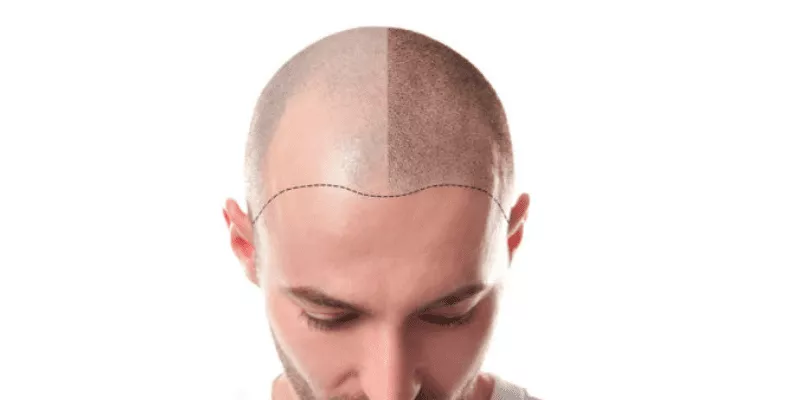How Long After Hair Transplant Before Swimming?
How long after hair transplant before swimming? It’s important that your hair grafts heal well after a hair transplant. Early problems with the hair grafts can cause hair growth and density problems everywhere. Because of this, it’s important not to put too much stress on your scalp or let harmful things touch the hair grafts. Keeping all of this in mind, it is important that patients don’t go swimming until their hair surgeon says they can.
If the hair transplant is done with the FUE or DHI technique, which means that the hair grafts are taken out one by one and transplanted one by one without surgery, the crusts on the scalp usually fall off within 15 days. After the crusts on your scalp fall off, you should wait another 15 days. In other words, you can go to the sea, a Turkish bath, or a sauna 3–4 weeks after a hair transplant.
How Long After Hair Transplant Before Swimming On Average?
But all of them have important things to think about. For example, when you go into the sea or pool, the most important thing to remember is to keep your scalp out of the sun. You shouldn’t go outside when the sun is high in the sky, and you should always use sunscreen with a high SPF. A swimming cap can go on your head. You should wear a hat at the beach or pool.
At first, spend a short amount of time in the Turkish bath or sauna. You should be careful about hygiene and choose places where you know they are clean.
When using traditional methods like FUT or microgreft, you have to wait longer. In this kind of hair transplant surgery, it takes about 30 to 45 days for the crust on the scalp to fall off. After these kinds of surgeries, you have to wait about 2 to 3 months before you can do things like go to the beach, pool, sauna, or Turkish bath. During this time, it is also very important to protect yourself from the sun.
How Long After Hair Transplant Before Swimming For Each Method?
For methods other than FUE or DHI, you can wait longer to go to a Turkish bath or sauna. Using too hot of air for incision is a big risk during the healing process.
If you get a hair transplant from a specialist surgeon, you’ll get the best advice about how to use the best hair transplantation technique, the best hairstyle for your face, and what to watch out for before and after the surgery. Your plastic surgeon will give you the advice you need and will do hair transplantation in a way that is both healthy and looks good.
Pattern baldness can be treated with an advanced method called hair transplant surgery, which can help you get a full head of hair back. You deserve to feel good about how you look, and the frustration of hair loss can make you feel bad about yourself. FUE hair transplants can help you feel like you did when you were younger. But can you swim after getting a hair transplant?
Swimming In Ocean
It is important to know how to take care of yourself after a hair transplant. Many people want to know how long they have to wait after the procedure before they can go swimming or spend time outside. Here’s what you need to know about swimming and the healing process after getting a hair transplant.
Depending on the type of FUE procedure you had, you may have some scars to deal with. As the cuts heal, the skin around this area will be especially sensitive and prone to damage. It’s not a good idea to let the scarred parts get wet until they have completely healed. Even though everyone heals differently, it usually takes between a few weeks and a month before you can put your head in the water.
There are a lot of pollutants and irritants in the ocean that could make things worse. Even though the salt in the water is good for you, it can mess up the natural process of your hair graft and let bacteria and other harmful things into your skin.
Swimming In Pool
One chemical that can be found in pool water is chlorine, which is just one of many. If you go to a swimming pool while your head is still healing, you could get an infection from the surgery. You shouldn’t go into the pool until your wounds have healed.
Your doctor will probably tell you to keep the areas where you had surgery clean and dry until they are fully healed. Depending on how your transplant went, you may have to wait up to 4 months before you can go swimming in a pool.
If you really want to know when you can swim after a hair transplant, follow these tips and precautions. They will help you get in the water sooner. If you’re not sure what to do, talk to your surgeon and the rest of the surgical staff.
After surgery, you should wait between 1 and 4 months to go swimming.
You should also wait at least 48 hours before washing your hair after a hair transplant. Try not to get your hair or head wet when you take your first shower in the days and weeks after your procedure, if you can help it. To give your hair transplants the best chance of healing, you should keep them dry and out of the way for as long as possible.
Can You Use Swimming Caps?
As long as the cup has not worn during the first few weeks after the procedure recommended that it used because it also protects the newly implanted follicles from chlorine.
And finally, you should wash and rinse your hair as soon as you get out of the pool. This way, any chlorine left on the scalp or hair will wash away so that it doesn’t hurt your skin or hair follicles.
Keep in mind that these directions also work for salt water, even though it doesn’t have chlorine but may have other chemicals. All of the advice about physical activity (don’t overdo it, don’t sweat too much, etc.), like don’t touch your head, also applies to sexual activity.
How Important is Hair Transplantation After Care for Long-Term Results?
The hair transplantation is a standard and increasingly popular procedure that many men and women opt for to restore their natural hair. The procedure involves transferring healthy hair follicles from the back or sides of the scalp to balding areas. Although it is a relatively safe and straightforward procedure, take proper care of your hair after the surgery to ensure optimal results. The success of a hair transplant depends mainly on how well you take care of your scalp and newly transplanted hair follicles during the healing process. With proper hair transplantation after care, your hair may become smooth, firm, and even fall out. Here are some tips to help you maximize your hair transplant results and maintain your new look.

One of the most important steps in ensuring long-term success with a hair transplant is following your hair transplant surgeon ’s instructions for hair transplantation after care. Your doctor will likely provide you with detailed instructions for taking care of your scalp, including when and how often to wash it, as well as what products you should use. In addition, they may provide you with medications to reduce inflammation and help facilitate healing.



